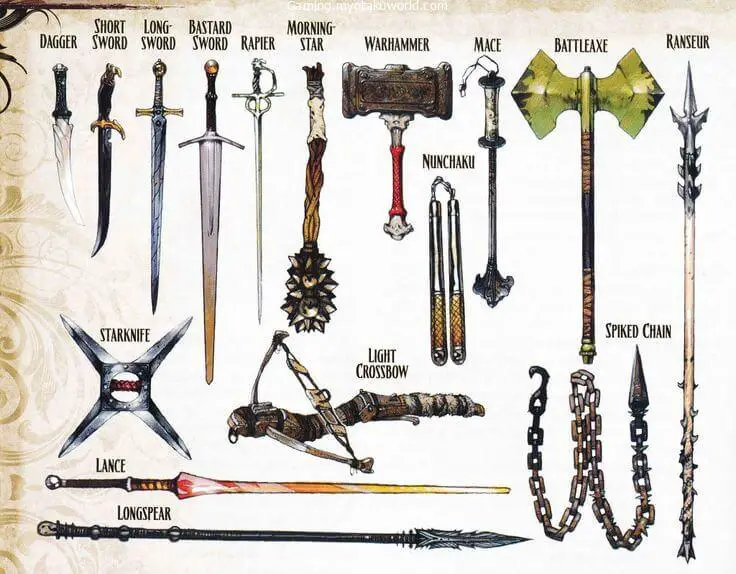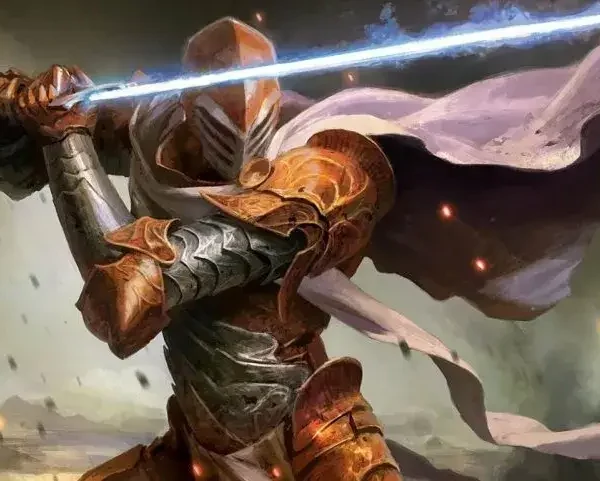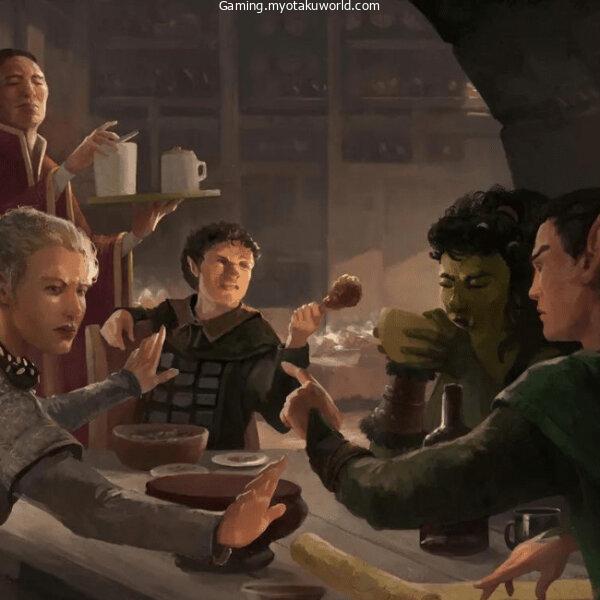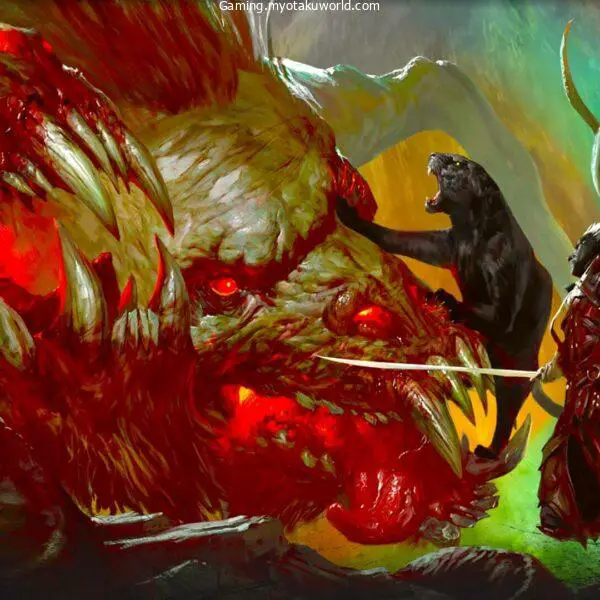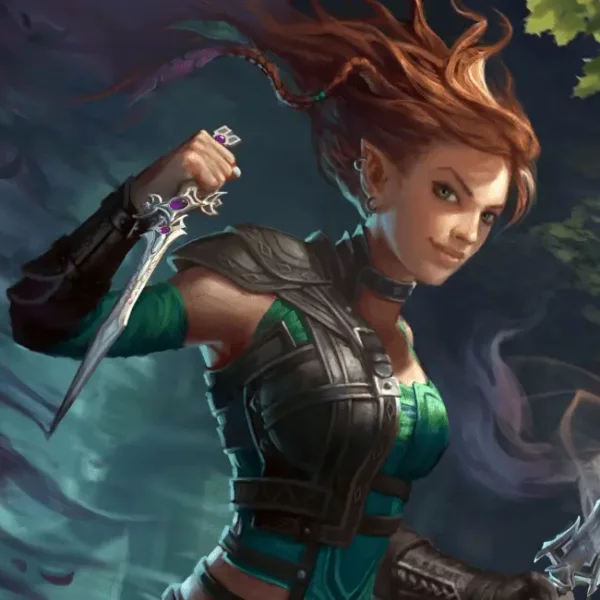Every adventurer requires equipment, from the clothes on your back to your weapons. Equipment can be anything your character carries on their person.
You can find it in your hands, on their backs, or in a pouch at their side.
You will be given certain equipment to start D&D. This is based on your class and history. You will eventually be able to sell, trade, or buy various items for your character as you play. What equipment do you have?
These are the types of equipment that your character could purchase, start, or acquire during the game.
- Gold
- Trade Goods and Art Objects
- Magic Items
- Armor
- Weapons
- Adventure Gear
- Tools
- Mounts and vehicles
- Trinkets
Gold

You will likely find treasure on your travels. Gold is the most popular type of treasure. While gold is the default currency in the world, it can also be called gold.
However, many coins can be traded and exchanged for wealth. A copper piece (cp), is worth 1/100 of the gold pieces (GP), while a silver piece, (sp), is worth 1/10gp. An electrum piece (ep), is worth 1/2gp, and a platinum item is worth 10gp.
You will begin your adventurers with a set amount of gold depending on your background. If you are an acolyte, you will have 15gp and other equipment when you start the game.
A gold piece is much more valuable than a dollar in real life and is something that many peasants will not deal with often.
One gram of gold is equivalent to about $100. One GP can cover a day’s modest living expenses. You can buy 20 arrows or a set of cook’s utensils.
Commoners use silver pieces as their most common currency. A silver piece is roughly equal to $10 and can be used to buy a flask of oil, a set of dice, or a chunk of cheese.
Copper coins are the most valuable and can be used to buy a candle or piece of chalk.
Trade Goods and Art Objects
Like many D&D worlds and medieval societies, a medieval society doesn’t trade with coins always.
There might be collections of grain, chickens, or art objects like paintings or necklaces.
Many times, the gold value of the objects will be provided to you, which makes it easier to trade them. These forms of wealth are easier to transport than thousands of coins.
Magic Items

The world is full of magic. Many magical items can be infused with magic energy to create amazing objects with extraordinary magical properties.
Although you won’t find magic items when you begin your adventure, you may come across them as you explore old tombs and defeat monsters.
There are many types of magic items, from magical armor and weapons to rods or staves with magical abilities. Every magic item has a rarity. The rarer an item is, the more powerful it is.
Armor

Is it possible to stop an incoming arrow or sword from piercing your flesh? Your Armor Class (AC), determines how difficult it is to hit an attack in D&D.
Your AC is higher, and the more difficult it will be. Your AC can be affected by many things, including the armor you wear, your shields, natural traits, and magic, as well as other features. There are three types of armor: light, medium, and heavy.
Even though light and medium armor do not provide as much protection as heavy armor, they allow you to be more mobile and can also add your Dexterity modifier (AC) to your AC.
This is your character’s armor covering and being able to dodge any incoming attacks. As heavy armor is purely dependent on the strength of the armor to protect your character, it has a static AC.
Adventurers have the option to carry a shield with one hand, in addition to wearing armor. This will increase their AC.
No matter what type of armor you choose, it is important that you are proficient in using it. This will depend on your race and/or class. You cannot cast spells if you don’t know how to use any type of armor.
Weapons

While armor can protect you from potential attacks, weapons are what you use to take down your enemies in battle. Weapons can be classified in two ways.
First, weapons can be divided into melee or ranged. Melee weapons, which you hold in your hand, such as a spear or sword, are meant to strike someone nearby.
You can also use slings and blowguns as a ranged weapon. These weapons can be used to strike enemies at a distance.
Second, weapons can be divided into simple weapons or martial weapons. Simple weapons, such as a dagger or club, don’t require any training.
Martial weapons, such as the longsword and great axe, require special training to use in combat.
Some weapons have special properties that are listed in the Player’s Handbook’s weapons table (PHB pg. 149).
These properties include:
- Munition: These weapons use ammunition for ranged attacks. A bow, for example, needs ammunition such as arrows.
- Finesse: These weapons can be used with a flourish. Instead of Strength, you can attack with your Dexterity modifier
- Heavy: These weapons are too large for small creatures to use efficiently. When attacking with one, small creatures are at a disadvantage
- Light: This weapon can be effectively used when fighting with two weapons
- Loading: These weapons can take time to recharge and you can only fire them once.
- Range: These weapons have a minimum and maximum range. These ranges are listed in a series of parentheses. The normal range refers to the distance a target must be in order to be attacked as normal. The attack will be disadvantageous if the target is farther than the normal range but further than the maximum range. They are out of range if they are beyond the maximum range.
- Reach: These weapons increase your reach by 5 feet when you attack with them
- Thrown: These weapons can be thrown according to their range (see below) and with the same ability as a melee attack
- Two-Handed: These weapons are best used with two hands
- Versatile: Although these weapons can be used on one hand, they do more damage when used on two.
The PHB doesn’t include all weapons that exist in the real world. However, your character can still use any weapon.
You have two options: either reskin a weapon from the PHB, or you can work with your DM and create your own.
No matter what weapon you choose to use, you cannot effectively wield it unless you are skilled with it. Your race and your class determine this proficiency.
Adventure Equipment

You need gear to go on your adventures, in addition to your weaponry and armor. Adventurers often travel with a lot of gear to help them eat, heal and rest.
You and your group can benefit from the adventuring gear that you purchase on your travels or start with. This is especially useful for low-level adventurers who don’t have access to too much magic.
Let’s look at some of what you can keep in your pack.
- Flasks: A small flask, or vial, of something, can prove very useful. A vial of acid can be used to do damage or a potion to revive party members. You could also grab a bag of 1,000 ball bearings to drop onto the ground to let people fall.
- Use of ammunition: Bows require arrows. It’s not a good idea to run out in the middle of a dungeon. You should also pick up a quiver.
- Spellcasting foci: Arcanecasters may want a wand. Druids could use a mistletoe sprig, while clerics might opt for an amulet. A focus can be used to channel magic and create spells. This will save you the hassle of carrying around a bag containing all your spell components.
- Containers: From waterkins to buckets and backpacks, you will need a way to carry the rest of your gear.
- Clothes: You will need clothes. This is not something I should have to say. It’s up to you how fancy they are.
- Rations: Do you need food to survive? Yes. Your DM will check to ensure you have enough food for your trip. No.
- Tools: If you don’t need specialized tools, grab a crowbar or hammer if that’s all your needs.
- Light sources: If someone in your group doesn’t have darkness vision, you will need a torch/lantern to enter the tomb.
- Usefulness: A rope or grappling hook is a must-have tool that will get you where you want to go.
There are many specialty items, but you won’t need one unless you are playing fantasy accounting.
Equipment packs
Is it necessary to choose every item before you can even start your first D&D game? No. The game makes it simple to get started.
You can start most classes with an equipment package. These are the essential items you need to travel, tailored for your character.
These packs can be found on page 151 of the PHB. These are:
- Burglar’s Pack: This backpack contains all kinds of items that can be used for breaking into and entering. You can use the hammer or crowbar to wedge doors and windows open. The oil and tinderbox are great for making Molotov cocktails. Runaway if you are caught.
- Diplomat’s Pack: If you like to smell good and plan to write lots of letters, this pack will be useful. This might not apply if you are dealing with political intrigue.
- Explorer’s Pack: Most of the time, you’re choosing between this pack and the Explorer’s Pack. This pack comes with a crowbar and hammer as well as ten pitons. You won’t receive a mess kit or a bedroll.
- Entertainer’s Pack: This package includes two costumes and a concealer kit. These can be used for any purpose.
- Priest’s Pack: This pack contains the usual gear plus an almsbox, incense, and censer. Clerics and Paladins can choose this pack or the explorers. If you don’t want to use incense, you can always sell it. You might also want to stop goblin corpses from smelling like incense.
- Scholar’s Pack: This backpack includes a book of lore and equipment for letter-writing. It also contains a small knife. Ink and parchment are essential for wizards or ritual casters. You can sell the book for 25gp if you don’t use it.
Tools

Sometimes a hammer or a crowbar is all you need. You might need specialized tools to do the job.
You can increase your proficiency by using a specific set of tools when you do a check with them.
Artisan’s tools
- Supplies for Alchemists: Two glass beads, a metal frame that holds a beaker over a flame, a stirring stick, a mortar, and pestle, as well as a pouch containing ingredients like salt, iron, and purified water. These supplies will help you identify chemicals more quickly. These tools allow you to create items such as acid and alchemist’s fire oil, perfume, soap, and oil.
- Brewer’s Supplies: A large glass jug with hops, a siphon, and tubing. These supplies will allow you to determine the correct amount of alcohol to give to someone to make them soft. These tools can be used to purify water after a brief or long rest.
- Calligrapher’s Supplies: Ink and twelve sheets of parchment. Also, three quills. These supplies will help you identify the author of ancient writings and decipher hidden messages on maps that you find.
- Carpenter’s tools: A saw and hammer, nails and hatchet, square and ruler, adzes, planes, and chisels. These tools will help you spot weak points and irregularities as well as the history of any woodwork that you encounter. These tools can be used to create a shelter that will keep your friends dry for a few days.
- Cartographer’s Tools: A quill, ink, and parchment; compasses; calipers; and a ruler. These tools will help you to decipher maps and hidden messages and make it easier for you to navigate the terrain. These tools can be used to create a map.
- Tools for the Cobbler: A hammer and awl. These tools can help you find magical shoes or tell where someone has been through their shoes. These tools allow you to repair the shoes of your companions, which allows them to travel an additional two hours per day. A hidden compartment can be made into any shoe.
- Cook’s Utensils: A metal pot, knives, and forks. These utensils will help you to identify the eating habits of different cultures, cook more delicious food, and make medicine less disgusting. These tools allow you to prepare a small meal in a brief rest, which gives your party an extra hit point for every Hit Die.
- Glassblower’s Tools: A blowpipe and marver, blocks, and tweezers. These tools allow you to identify glass containers’ contents by inspecting how liquids have affected them and pinpoint weak points in the glass structure.
- Tools for Jewelers: A small saw, hammer, files, and pliers. These tools allow you to inspect the jewelry and determine its value quickly.
- Leatherworker’s Tools: A knife, mallet, and edger. These tools allow you to examine magical items made from leather and determine their origin.
- Mason’s tools: A trowel and hammer, chisel and brushes, as well as a square. These tools will help you spot weak points and irregularities in stone walls and floors and identify their age.
- Tools for the Painter: A canvas, easel, paints, brushes, and charcoal. These tools are useful for identifying and analyzing paintings and murals. These tools can be used to create simple works of art or copy an existing piece of art.
- Potter’s tools: Needles and ribs, scrapers, and a knife. These tools allow you to identify and examine ceramic objects, as well as determine the original form of broken pottery.
- Smith’s tools: Hammers and tongs, charcoals, rags, and a whetstone. These tools are useful for inspecting metal objects, including weapons. You can repair metal objects using these tools and a sufficient heat source.
- Tinker’s Tools: Small tools, thread, needles, and a whetstone. Also bits of cloth, leather, and a small amount of glue. Tinker’s tools can be used to repair everyday items, such as pots and pans or torn clothing. These tools can help you determine the source of damage to an object. These tools can be used to repair damaged objects.
- Weaver’s tools: Thread and needles. Also, scraps of cloth. To make clothing, weavers’ tools are required. However, if you are proficient in weaving tools, you can use a loom. These tools are useful for identifying and examining cloth objects. These tools can be used to repair damaged cloth objects or craft clothing for another person.
- Woodcarver’s tools: A knife and a gouge. These tools are useful for inspecting wooden objects and trees. If you have the necessary wood, these tools can be used to repair or modify wooden objects and arrows.
Other tools
- Disguise kit: Cosmetics and hair dye. Also small props and clothing. You can disguise yourself as a nobleman, infuriate a local or change your appearance. It takes ten minutes to make a disguise if you are skilled with the kit. This can be done as part of a longer rest.
- Forgery kit: This includes parchments and paper, quills, and seals. Also, small tools for sculpting wax seals. These tools can be used to create forged documents. This kit is essential for determining the validity of documents and other magic items.
- Gaming sets: There are many gaming sets that include everything you need to enjoy the game.
- Herbalism kit: Pouches for herbs, clippers, leather gloves for collecting plants, and a mortar and pestle. This kit allows you to identify herbs and create antitoxins or healing potions.
- Music Instruments: Life on the road is not always quiet. A gentle, inspiring instrument can help to lift your mood. If you don’t know how to play an instrument, it could have the opposite effect on your travel companions.
- Navigator’s Tools: A chart, a compass, and calipers. These tools can help you find your position at sea or chart the course of a ship’s voyage.
- Poisoner’s Kit: Glass vials and a mortar and pestle. These tools will help you to identify poisons and safely apply them without getting hurt.
- Thieves’ Tools: A small folder, a set o lock picks and a small mirror mounted to a metal handle. A pair of pliers, narrow-bladed scissors, and a set o lock pick. One of the most valuable tools is the Thieves’ Tools. These tools can be used to disable traps and pick locks.
Mounts and vehicles

You can travel faster by using vehicles and mounts than you could if you were walking. There are many options for standard mounts in D&D. Special circumstances may allow you to get more exotic mounts.
Your world will determine which mounts you have available. The most popular mount is riding horses, but there are other options, such as camels and elephants.
If you have the right environment, it is possible to fly and even mount underwater. Although you don’t need a lot to start, it is possible to rent, steal or purchase one for your travels.
Barding is a type of armor that you can give your children if you intend to keep a certain amount. This will cost you four times as much armor for a humanoid.
You can also rent or buy vehicles such as wagons and chariots around the world. Long-distance travel is possible through various ships, as most D&D worlds were set in centuries ago. Your DM will also determine the availability of any vehicle.
Trinkets
Trinkets are non-magical, small objects your character may already own. You can create your character by rolling on the trinkets tables (PHB 160-161) to start the game with an odd, small item.
These trinkets can be used as inspiration to help you create your character’s story. What is the secret to your success? You must keep it with you. What significance does it have for you?
FAQs
Which is the best D&D starting equipment?
Other than armor and weaponry, you should have a rope and torches (or similar light source), quiver, arrows, and a spellbook.
Which equipment should you use to start D&D?
Your starting equipment is the sum of all the equipment you have been given by your family and your class. You can also choose to have your starting wealth determined based on your class (PHB page 143) and purchase the items you desire.
Which should I choose, starting equipment or starting wealth
You can buy whatever you want when you start wealth. For new players, it is better to start equipment. This makes it easier and allows you to get started sooner. You can always buy gear later.Starting wealth won’t buy much equipment for fighters or paladins. You’ll be able to make a profit if you have all the expensive gear.
Which equipment should you use to start at the higher levels of D&D?
The level of your skill and the amount of common magic in the world you are playing will determine whether the equipment is available at higher levels. The Dungeon Master Guide (DMG) page 38 explains that higher levels can be started with equipment.
How many weapons are allowed in D&D?
Your carrying capability (in pounds), is equal to 15 times your Strength score. Although the weight of weapons can vary, it is unlikely that you will be concerned about it. One weapon can be held at a given time. A variant rule states that if you have gear more than five times your Strength score, your speed is reduced by ten feet. If you have gear more than ten times, you will be heavily encumbered. If they use this rule, check with your DM.
What type of armor can you wear?
To be able to cast spells and attack effectively, you must be proficient in a particular type of armor (lightening, medium or heavy). Your race and your class characteristics will determine your proficiency.
Final Words
You can find many items in D&D. You’ll hopefully be able to add lots of magic and gold items to your equipment to maximize your legend.
As you gain more wealth and gear, ensure you don’t exceed 15 times your Strength score.
You’ll find a bag of holding somewhere in your group and be able to throw your excess gear into another dimension. Problem solved.
